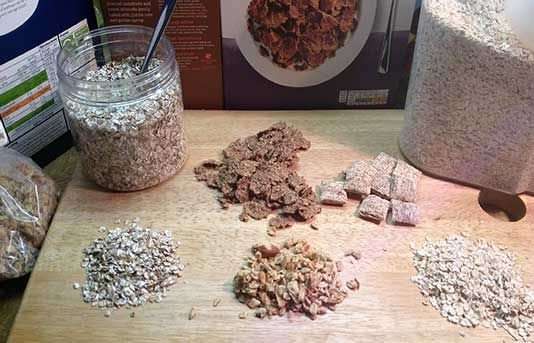New wholegrain labelling system helps consumers choose healthy breakfast options

University of Hertfordshire researchers have been trialing a new approach to help the public easily identify which wholegrain foods are healthiest.
Currently there is no national or international definition of what a wholegrain food is, leading to some foods containing high levels of fat or sugar being labelled as wholegrain, particularly breakfast cereals, and appearing to be healthier than they are.
Their findings have been published in the online journal Public Health Nutrition and could be used by food manufacturers to develop a new food labelling system in addition to the current traffic light system.
The UK Institute of Grocery Distribution recommend that a food should have at least 8g of wholegrain ingredients per serving to be called whole grain. However, this recommendation is non-binding and the content of other nutrients are not specified in relation to this resulting in some foods, currently described as wholegrain, also having high levels of sugar or fat.
Research findings
Researchers Bahar Ghodsian and Angela Madden have found that wholegrain foods with a carbohydrate: fibre ratio of less than 10:1 tend to be the lowest in fat, sugar and salt. A total of 266 breakfast cereals and 162 breads sold at the four major UK supermarkets were identified as meeting this criterion and their nutritional quality was compared with the Food Standards Agency traffic light system. Breads which met the criterion typically contained medium fat, low saturated fat, low sugar and medium salt whilst breakfast cereals typically contained medium fat, low saturated fat, high sugar and low salt.
The benefits associated with eating wholegrain ingredients are well-established and include reducing the risk of cardiovascular disease (CVD), type 2 diabetes and many cancers. However, wholegrain intake in the UK remains low with 45% of the population eating less than one serving per day and 18% eating none over a four-day period.
New wholegrain labelling system
Dr. Angela Madden, Lead for Nutrition and Dietetics at the University of Hertfordshire who supervised the project, said "In the UK, the average intake of sugar is higher than recommended and average intake of fibre is less than recommended. There is lots of information in the media about sugar but people often forget about fibre and it is important to consider both of these, especially in foods like breads and cereals.
"A public health initiative is clearly needed to substitute foods containing whole grains for those containing significant amounts of refined grains in order to improve health, save resources and reduce mortality."
"Our work shows that using the carbohydrate:fibre ratio helps to identify foods that have good nutritional value. It supplements the existing front-of-pack traffic light labelling currently in use. We suggest that food manufacturers should consider adopting this approach to help consumers."

















